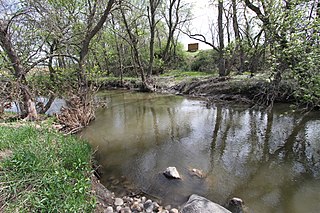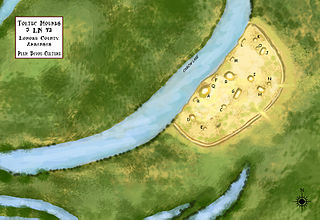
Plum is a borough in Allegheny County, Pennsylvania, United States. The population was 27,144 at the 2020 census. A suburb of the Pittsburgh metropolitan area, it is located northeast of the city in what is commonly referred to as the East Hills suburbs.
Interlibrary loan is a service that enables patrons of one library to borrow physical materials and receive electronic documents that are held by another library. The service expands library patrons' access to resources beyond their local library's holdings, serving as "an integral element of collection development" for libraries.
The online public access catalog (OPAC), now frequently synonymous with library catalog, is an online database of materials held by a library or group of libraries. Online catalogs have largely replaced the analog card catalogs previously used in libraries.

The Minneapolis Public Library (MPL) was a library system that served the residents of Minneapolis, Minnesota in the United States. It was founded in 1885 with the establishment of the Minneapolis Library Board by an amendment to the Minneapolis City Charter. Lumber baron and philanthropist T. B. Walker and other city leaders such as Thomas Lowry were members of the first library board. In 2008, after some financial difficulties, the library was merged into the Hennepin County Library system. At the time of its merger, the library included Central Library in downtown Minneapolis and fourteen branch libraries. Its collection numbered about 3.1 million items with about 2.2 million of these housed in the central library.

OCLC, Inc., doing business as OCLC, is an American nonprofit cooperative organization "that provides shared technology services, original research, and community programs for its membership and the library community at large". It was founded in 1967 as the Ohio College Library Center, then became the Online Computer Library Center as it expanded. In 2017, the name was formally changed to OCLC, Inc. OCLC and thousands of its member libraries cooperatively produce and maintain WorldCat, the largest online public access catalog in the world. OCLC is funded mainly by the fees that libraries pay for the many different services it offers. OCLC also maintains the Dewey Decimal Classification system.
An integrated library system (ILS), also known as a library management system (LMS), is an enterprise resource planning system for a library, used to track items owned, orders made, bills paid, and patrons who have borrowed.
Melvyl was the name of the online catalog of the University of California's library system. The Melvyl union catalog was produced by the California Digital Library — a unit within the department of Academic Planning, Programs, and Coordination at the UC Office of the President in downtown Oakland, California. Melvyl was named after Melvil Dewey, the library pioneer who invented the Dewey Decimal System. Melvyl was supported by the OCLC's WorldCat Local platform, which was retired in July 2021.
The California Digital Library (CDL) was founded by the University of California in 1997. Under the leadership of then UC President Richard C. Atkinson, the CDL's original mission was to forge a better system for scholarly information management and improved support for teaching and research. In collaboration with the ten University of California Libraries and other partners, CDL assembled one of the world's largest digital research libraries. CDL facilitates the licensing of online materials and develops shared services used throughout the UC system. Building on the foundations of the Melvyl Catalog, CDL has developed one of the largest online library catalogs in the country and works in partnership with the UC campuses to bring the treasures of California's libraries, museums, and cultural heritage organizations to the world. CDL continues to explore how services such as digital curation, scholarly publishing, archiving and preservation support research throughout the information lifecycle.
The Ohio Library and Information Network (OhioLINK) is a consortium of Ohio's college and university libraries and the State Library of Ohio. Serving more than 800,000 students, faculty, and staff at 88 institutions with 117 libraries, OhioLINK's membership includes 16 public universities, 23 community/technical colleges, 48 private colleges and the State Library of Ohio. OhioLINK serves faculty, students, staff and other researchers via campus-based integrated library systems, the OhioLINK central site, and Internet resources.

The Pierce County Library System (PCLS) is a library system serving the residents of Pierce County, Washington. The Pierce County Library System has 20 library locations serving 580,000 people in unincorporated Pierce County and 15 cities and towns which have annexed to the system for library service. It circulates 6.9 million items annually, hosts seasonal youth story times, teen clubs, events for youth and adults, classes for skills development and technology, an active summer reading program, and connects with social media. In 2016, there were 334,362 library cardholders, PCLS locations had more than 2.2 million visitors, and the website had more than 3.5 million visitors.

Bruce Mines is a town in the Canadian province of Ontario, located on the north shore of Lake Huron in the Algoma District along Highway 17. The town of Bruce Mines had a population of 582 residents in 2016. The current mayor of Bruce Mines is Lory Patteri.
Evergreen is an open-source integrated library system (ILS), initially developed by the Georgia Public Library Service for Public Information Network for Electronic Services (PINES), a statewide resource-sharing consortium with over 270 member libraries.

On the Banks of Plum Creek is an autobiographical children's novel written by Laura Ingalls Wilder and published in 1937, the fourth of nine books in her Little House series. It is based on a few years of her childhood when the Ingalls lived at Plum Creek near Walnut Grove, Minnesota, during the 1870s. The original dust jacket proclaimed, "The true story of an American pioneer family by the author of Little House in the Big Woods".

Plum Creek is a 35.4-mile-long (57.0 km) stream near the city of Walnut Grove, Minnesota. It passes to the northwest of the town, flowing northeasterly to the Cottonwood River, with its waters then flowing to the Minnesota River and eventually the Mississippi River. Plum Creek lends its name to a regional library network.

Plum Bayou Mounds Archeological State Park, formerly known as "Toltec Mounds Archeological State Park", also known as Knapp Mounds, Toltec Mounds or Toltec Mounds site, is an archaeological site from the Late Woodland period in Arkansas that protects an 18-mound complex with the tallest surviving prehistoric mounds in Arkansas. The site is on the banks of Mound Lake, an oxbow lake of the Arkansas River. It was occupied by its original inhabitants from the 7th to the 11th century. The site is designated as a National Historic Landmark.
The Northern New York Library Network is one of New York’s nine Reference and Research Resources Councils. These organizations are chartered by the New York State Board of Regents and charged with facilitating cooperative library services and improving reference and research resources for the people of New York.
The Lake Agassiz Regional Library (LARL) system is a public library system in northwestern Minnesota that covers seven counties. The administrative office is located in the Moorhead branch. In total there are 13 branch libraries and 9 LINK site locations.

The Library Corporation (TLC) creates and distributes automation and cataloging software to public, school, academic, and special library systems worldwide. Based in Inwood, W.Va., with additional offices in Denver, Singapore, and Ontario, the company is owned and operated by the same family that established it in 1974.
A library portal is an interface to access library resources and services through a single access and management point for users: for example, by combining the circulation and catalog functions of an integrated library system (ILS) with additional tools and facilities.
The Reaching Across Illinois Library System is a regional library system consisting of 1,300 public, academic, special, and school library members, representing more than 3,500 library facilities in Northern, West-central Illinois. The regional library system was created in 2011 when the Alliance Library System, DuPage Library System, Metropolitan Library System, North Suburban Library System, and Prairie Area Library System merged.








